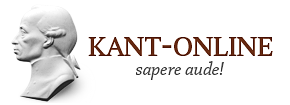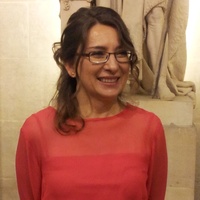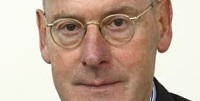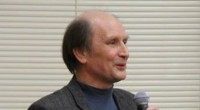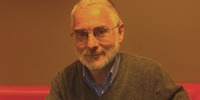Patrícia Kauark-Leite. Classical Reason and Quantum Rationality: Transcendental Philosophy Face Contemporary Physics
Kant wrote his Critique of Pure Reason in 1781 and the Metaphysical Foundations of Natural Science in 1786, taking as reference Newtonian physics. Naturally, we cannot expect that his doctrine be applied without any modification to the contemporary physics. Otherwise, we cannot ignore the challenges of the pragmatic-linguistic turn of contemporary philosophy post Wittgenstein. Thus, to evaluate the relevance and properness of transcendental thought we should take the Kantian philosophy, not as a fact, but as a method. This very powerful method, however, must be updated to support the new constraints of contemporary science. This science, indeed, that must be taken as a fact and not the Kantian philosophy itself. In the specific case of quantum mechanics, we have to wonder about the general conditions of this theory that make possible such knowledge, which predictive value is much more accurate than the classical physics.
In the1930’s, efforts to extend transcendental analysis to the field of contemporary physics were made by Neo-Kantian philosophers, such as Grete Hermann, Ernst Cassirer and even Heisenberg himself. More recently, new approaches[1] began more exhaustively to explore the potential of transcendental philosophy, anchored on current debates about the fundaments of quantum mechanics. It represents a welcome change of perspective from the view of logical empiricists and scientific realists who, for decades, rejected the transcendental method, as a potential tool for providing new insights on the epistemic basis of scientific knowledge.
This work supports a transcendental pragmatic position in the philosophy of science, beginning with an overview of the key elements necessary to understand the transcendental locus of ordinary language in quantum mechanics context.
A controversial issue is whether or not the Copenhagen Interpretation of quantum mechanics can be understood in terms of Kantian philosophy. Heisenberg, in several of his essays, takes a clear stand in regards to the limits of Kantian epistemology in relation to quantum theory. There is even a chapter entitled “Quantum Mechanics and Kantian Philosophy” in his book “Physics and Beyond: Encounters and Conversations”. By contrast, Bohr makes no explicit references to Kantian philosophy[2], even though he received an education during a period strongly influenced by Neo-Kantianism. This absence of philosophical references may in part explain the divergences between Bohr´s interpreters’ characterization of his philosophical affiliation. For Peter Mittelstaedt (1994, р. 119—120), Bohr is the first to bring the empiricism of David Hume into the field of quantum mechanics. On the other hand, scholars like Clifford A. Hooker (1972), John Honner (1982), Catherine Chevalley (1994) and Steen Brock (2003) establish the parallelism between Kant and Bohr’s thought. Although no explicit reference to Kant can be found in Bohr´s texts, these authors claim that implicit Kantian elements can undeniably be found therein.
The principle of complementarity is, doubtlessly, one of the most original contributions of Bohr´s contextual interpretation of quantum theory. It is introduced in very different ways in his many articles. It is sometimes defined in terms of the complementary and mutually exclusive aspects of atomic phenomena: the corpuscular and the wave. In the light of uncertainty relations, he also presented his principle as an expression of the complementary use of classical concepts, such as position and momentum. However, I would like to draw attention to yet a third expression, one that is formulated in strictly Kantian terms and which was disclosed during the Como Conference in 1927: the complementarity between space-time intuition and the principle of causality. Bohr claims that: “[Quantum postulate] implies a renunciation as regards the causal space-time co -ordination of atomic process. [5, p. 52]. In fact, Kantian vocabulary pervades Bohr’s writings. Heisenberg [15, p. 62—65] also expresses the essential complementarity between space-time intuition and the principle of causality. In quantum theory we have either phenomena described in terms of space and time or causal relationships expressed by mathematical laws. These alternatives are related statistically.
Thus, Bohr and Heisenberg recognize that the principle of complementarity introduces a limited validity to Kant´s a priori notions. On the one hand, they realize that it is impossible to intuitively describe the quantum object, in terms of space and time, given that the formalism of quantum theory does not take place in the ordinary three-dimensional space but, rather, in a multidimensional vectorial space. On the other hand, they claim that it is not possible to discard classical intuitive representations to take into account the physical description of experimental phenomena. The principle of complementarity precisely defines the role played by intuitive pictures and the principle of causality into microphysical context.
It may, however, be argued that the somewhat Kantian elements, which Bohr and Heisenberg use to interpret quantum formalism, is coherent with Kant´s epistemology.
I do not agree. In my opinion, from a Kantian point of view, it does not make sense to consider the space-time intuition isolated from the principles of understanding, among which the principle of causality is but one. It should not be overlooked that, for Kant, intuition is connected to the two mathematical principles of pure understanding: the axioms of intuition and the anticipations of perception. These are the two principles that justify, a priori, the mathematical constitution of nature. It does not seem to me that the state vector evolution equation can, purely and simply, be considered as an expression of the causal law. For Kant, the principle that governs continuous temporal evolution, such as is the case of the mechanical laws expressed by partial differential equations, is not the second analogy of experience, but, rather, the principle of anticipations of perception. Curiously, there are almost no references to this principle in the epistemological discussions about the relationships between Kantianism and quantum theory.
Moreover, it should be remembered that, when it comes to Kant, it is senseless to talk about causality without correlating it with intuition. According to his definition of the second analogy, the principle of chronological succession in accordance with the law of causality is a rule that intervenes in order to connect the empirical manifold. Kant puts it as follows: “in the perception of an event there is always a rule that makes the order in which the perceptions (in the apprehension of this appearance) follow upon one another a necessary order” [A193/B238]. Thus, considering Schrödinger´s equation as an example of a causal law one does not find any bearing in the Kantian principle of causality, which is applicable only to a succession within the order of perceptions. Outside the experimental context, Kant´s second analogy no longer plays its role of justification of knowledge.
Therefore, a more detailed analysis to determine any similarity between Bohr´s and Kant´s respective approaches has brought about some unsurmountable problems leading us to suspect that such similarity does not, in fact, exist. However, should we take the term ‘transcendental’ in a wider sense, as suggested by John Honner in his 1982 article «The transcendental philosophy of Niels Bohr», an intimate relationship may be established between transcendental philosophy and Bohr´s doctrine. According to Honner, Bohr can no longer be considered a Kantian philosopher, but, rather, a transcendental philosopher. For this, it is necessary to admit that strictly Kantian forms have an extremely limited range of validity and that transcendental arguments contain an epistemic legitimacy that goes far beyond the realms of classical mechanics.
As Bohr narrows the focus of his interpretation on the limits of the applicability of our concepts, he, in fact, does nothing but extend the Kantian analysis to a totally different epistemic situation. He states that the essence of the quantum postulate should be searched for on the inevitable limit of our possibilities of definitions[3]. It is worth remembering that the issue concerning the limits of knowledge — which plays a central role in the Bohrian approach — is an essentially Kantian issue. If we consider that the meaning of ‘transcendental’ must extend and comprise all the investigation about the conditions that limit our experience, then Bohr´s philosophy must undoubtedly be viewed from a transcendental angle rather than from the angle of a strict Kantianism.
A typically Bohrian transcendental argument concerns the so-called ‘conditions of an unambiguous communication’, which are conditions that limit the very experience of human beings. The result of his analysis of the role of the ordinary language in quantum contexts extends into two directions. On the one hand, it is impossible to use the concepts of ordinary language to produce any type of a univocal description of the microphysical nature without inevitably producing imprecisions and ambiguities. On the other hand, Bohr points to the inexorable fact that, in their concomitantly experimental and communicative practice, physicists cannot refrain from using ordinary language, the terms of which denote both observable properties of objects and the equally observable relations between them. Classic concepts are necessarily used to describe experimental devices and results. For Bohr, these concepts are merely refined versions of our ordinary concepts about our daily experience and always appear interconnected in terms of space and time. The idea is that our experiences, which consist of actions and observations, should always be described within ordinary language terms.
This problem concerning the limitation of ordinary language does not appear in the context of classical physics. Laws of classical mechanics are expressed by means of mathematical equations whose symbols must be related to experimental facts or, more specifically, to measuring results. Associated with quantities and physical constants, the value of some of these symbols can be determined by means of measuring processes. While such a connection between symbols and measuring results remains, all phenomena will be represented by mathematical formalism. In this context, a biunivocal correspondence may be established between a pair of conjugated variables — such as position and momentum, the temporal evolution of which is given by a partial differential equation — and the simultaneously measured values of the said variables.
However, the epistemic situation becomes very complex in quantum mechanics with regard to the absence of an adequate criterion that is capable of correlating the mathematical symbols of the formal language to the concepts of the ordinary language.
The solution found by Bohr was to limit, in a complementary way, the use of concepts, renouncing the realistic ideal of producing space-time descriptions of the microphysical reality, within a framework of a predicative semantics. If physicists still use space-time descriptions containing classical terms they do so for purely pragmatic reasons. They must communicate their experimental results and, to do so, they must use ordinary language. None of the complementary descriptions in terms of wave and particle is compatible with a theory of reference that presupposes a microscopic reality of unobservable objects. The contradiction is avoided by considering that formalism is consistent in itself and with each contradictory empirical description. The contradiction appears when we try to include in one single interpretation both formalism and more than one case of experimental application as if they refer to the same unobservable reality. The only way to avoid ambiguity is to impose upon it a limitation in terms of the pragmatic use of concepts from the ordinary language.
I am of the opinion that the deep sense of Bohr´s interpretation presents an approach that is at the same time pragmatic and transcendental. With Bohr, we had to admit the fact that the conditions required for understanding a physical phenomenon are, at the same time, the conditions of the very possibility of communication. In my opinion, this performative dimension of language proves helpful in an attempt to interpret the complementary role of theoretical concepts in experimental context quantum mechanics. I argue that the meaning of a proposition cannot be grasped independently from the contextual value of the proposition itself. The pragmatic-transcendental turn taken by contemporary philosophy started by Wittgenstein points to fact that, in order to understand certain propositions, the context in which they are made is a determinant of their meanings. Should we take the ordinary language as a part of a linguistic game also played by quantum physicists as they communicate experimental results, we would be in a better position to understand the role it plays in the very definition of quantum objectivity. This objectivity is no longer subjectively determined by a universal conscience — as claimed by Kant — but, rather, inter-subjectively limited by experimental contexts, which should always be communicated. I believe that such a perspective has important implications in terms of ensuring both a good interpretation of the quantum mechanics and the development of a sound theory of science.
But, what exactly is the novelty introduced by this pragmatic-transcendental approach? In a constitutive level, the physical knowledge of the world, contextually dependent upon the conditions of observation, aims at reconstructing phenomena within their logical- mathematical structure. However, this logical-mathematical rationality does not suffice. It always presumes the existence of the discursive level, that is to say, the level of ordinary language, in the light of which the experimental performances are described. These two kinds of rationality — mathematical and discursive — must be considered as parts of an interpretation process where merely formal symbols are related to ordinary concepts which are simultaneously subordinated to the experimental act of measuring and to that of communication. Thus, new transcendental principles must be found not only in the constitutive level of experience but also in the performative level, where the constitutive statements will ensure an intersubjective agreement.
From a pragmatic-transcendental perspective, it is no longer matter to think that phenomenal objectivity is caused by an unobservable reality, even if such reality be unknown or hidden. It is time to seriously take into account the necessary intersubjective character of objectivity for which a pragmatic perspective is required. The highest principle of all synthetic a priori judgments[4] may be reworded from a Bohrian point of view to read as follows: “the conditions of the possibility of experience in general are likewise conditions of possibility of an unambiguous communication of the results of experience, and that for this reason they have objective validity in a priori propositions”. The objectivity of experience, therefore, can be understood in the sense that it may be shared in an intersubjective way. Quantum mechanics is the best example of the performative act according to which the statements used to communicate experiences are themselves actions. This interpretation of quantum theory allows us to consider that the mathematical rationality of formalism cannot be detached from our condition of beings acting in the world.
We now have a wider picture of the different a priori dimensions. The pragmatic -transcendental perspective leads us to consider at least three such dimensions: that of the a priori as constitutive principles of quantum objectivity (mathematical and dynamical dimension); that of the a priori as regulative principles of quantum theory (ontological dimension); and that of the a priori as performative principles of communicative and experimental activity (pragmatic dimension). However, these three dimensions, are not quite so independent from one another as they integrate in order that they may constitute the field of validation of our scientific practice. The constitutive and regulative a priori dimension of experience is, in quantum mechanics, inexorably attached to the a priori dimension of communication, which assumes that ordinary language plays a special role. In the sense of a regionalization of reason, given by Jean Petitot, the quantum theory has shown us that reason has lost its purity and became a pragmatic reason. We have no more a pure reason detached from the practical reason, as we find in Kant’s philosophy, but it is now a reason that is at the same time pure and practical, and, in that sense, pragmatic.
The bibliography
1. Bitbol M. Mécanique quantique: une introduction philosophique, Paris, 1996.
2. Bitbol M. Some steps towards a transcendental deduction of quantum mechanics // Philosophia naturalis. 1998. Р. 35, 253—280.
3. Bitbol M. Relations, Synthèses, Arrière-Plans; sur la philosophie transcendantale et la physique moderne // Archives de Philosophie. 2000. Р. 63, 595—620.
4. Bitbol M. Arguments transcendantaux en physique moderne // Chauvier S., Capeillères F. (éd.). La querelle des arguments transcendantaux; Revue philosophique de l’Université de Caen. 2000. Р. 35, 81—101.
5. Bohr N. Atomic theory and the description of nature. Cambridge, 1934.
6. Brittan Jr. G. Kant and the quantum theory // P. Parrini (ed), Kant and Contemporary Epistemology. Dordrecht, 1994.
7. Brock S. Niels Bohr’s Philosophy of Quantum Physics. Berlin, 2003.
8. Cassirer E. Determinism and indeterminism in modern physics: historical and systematic studies of the problem of causality, trad. O. T. Benfey. New Have, 1956.
9. Chevalley C. Glossaire’, in N. Bohr, Physique atomique e connaissance humaine. Paris, 1991. Р. 345—567.
10. Falkenburg B. Bohr’s Principles of Unifying Quantum Disunities // Philosophia-Naturalis. 1998. Р. 35, 95—120.
11. Falkenburg B. Kants Naturbegriff und die Begründung der modernen der Physik // Philosophia naturalis. 2000. Р. 37, 409—438.
12. Falkenburg B. Kant’s architectonic principles for a metaphysics of nature // C. Ferrini (ed.), Eredità Kantiane (1804—2004): questioni emergenti e problemi irrisolti. Napoli, 2004. 127—153.
13. Folse H. J. Kantian aspects of complementarity. Kant-Studien, 1978. Р. 69, 58—66.
14. Heisenberg W. Physics and Beyond: Encounters and Conversations. Harper & Row, Publishers, 1972.
15. Heisenberg W. The physical principles of the quantum theory. Trad. by Carl Eckart, Frank C. Hoyt. New York, 1930—1949.
16. Hermann G. Les fondements philosophiques de la mécanique quantique. Trad. A. Shnell, introduction et postface par Lena Soler. Paris, 1996 (Translation from de ‘Die naturphilosophischen Grundlagen der Quantentheorie’, Abhandlungen der Fries‘schen Schule, Neue Folge, cahier 2, 1935, Р. 69—152.)
17. Honner J. The transcendental philosophy of Niels Bohr // Studies in the History and Philosophy of Sciences. 1982. Р. 13, 1—30.
18. Hooker C. A. The nature of quantum mechanical reality // R. G. Colodny (ed.), Paradigms and Paradoxes. Pittsburgh, 1972. Р. 135—172.
19. Kant Critique of pure reason. Trans. Norman Kemp Smith. New York, 1929.
20. Mittelstaedt P. Philosophical Problems of Modern Physics. Trad. W. Reimer. Dordrecht, 1976.
21. Mittelstaedt P. The constitution of objects in Kant’s philosophy and in modern physics // P. Parrini (ed.), Kant and contemporary epistemology, Dordrecht, 1994. Р. 115—129.
22. Petitot J. La philosophie transcendantale et le problème de l’objectivité. Paris, 1991.
23. Scheibe E. Kant’s apriorism and some modern positions // E. Scheibe (ed.), The role of experience in science. Berlin, 1988. Р. 1—22.
24. Von Weizsacker C. F. The Unity of Physics’and ‘Niels Bohr and Complementary: the place of classical language // T. Bastin (ed.), Quantum Theory and Beyond. Cambridge, 1971.
25. Von Weizsacker C. F. The preconditions of experience and the unity of physics // P. Bieri, R-P. Horstmann et Krüger (eds.), Transcendental arguments and science. Dordrecht, 1979.
This article was firstly published in collected articles «Klassische Vernunft und Herausforderungen der modernen Zivilisation»:
Kauark-Leite, Patrícia. Classical Reason and Quantum Rationality: Transcendental Philosophy Face Contemporary Physics// Klassische Vernunft und Herausforderungen der modernen Zivilisation. Hrsg. Von Prof. Dr. Wladimir Bryuschinkin. Bd.2. Kaliningrad, 2010. S. 237– 246.
[1] See, for instance, Carl Friedrich von Weizsäcker (1971/1979), Peter Mittelstaedt (1976, 1994), Erhard Scheibe (1988), Brigitte Falkenburg (1998, 2000, 2004), Gordon Brittain (1994), Jean Petitot (1991) and Michel Bitbol (1996, 1998, 2000).
[2] See, for instance, Henry Folse (1978), John Honner (1982) and Catherine Chevalley (1991).
[3] See Bohr´s letter to Schrödinger, dated 23/05/28 [5, S. 16].
[4] «The conditions of the possibility of experience in general are likewise conditions of the possibility of the objects of experience, and that for this reason they have objective validity in a synthetic a priori judgment» [B 197].
